Thank you for visiting! By the way… any links on this page that lead to products on Amazon and other stores/partners are affiliate links Aquarium Store Depot earns a commission if you make a purchase.
Are you struggling with a hair algae outbreak? This common nuisance algae leaves many aquarium keepers frustrated and even has some people tearing down their tanks. It affects both fresh and saltwater reef tanks, but the good news is you can get it under control. If you want to learn how to get rid of hair algae in your aquarium, this article is for you!
Let’s get started!
Key Takeaways
- Hair Algae is pet algae that grow in high-nutrient environments
- The first thing to address with Hair Algae is your source of water
- Lots of healthy aquarium plants can choke out hair algae over time
- Nerite snails, Molly Fish, and Amano Shrimp eat hair algae
What Is Hair Algae?
Hair algae is a common type of photosynthetic green algae. This means it needs light, carbon dioxide, and nutrients to grow, just like plants and macroalgae. Algae are a little different from plants in that they do not have roots, stems, or leaves, however.
The most common types of hair algae found in aquariums come from the genus Oedogonium1, but there are many algae species and you’d need a microscope to accurately identify them.
Green hair algae are common in nature and in aquariums where it grows attached to plants, hardscape features, and even on snail shells! It forms long fine strands that often grow in clumps. Fortunately, the types found growing in aquariums tend to be soft and pretty easy to remove.
Is It Bad?
Green hair algae are usually not harmful to your fish or other livestock. In extreme cases, this algae can limit the swimming space in your aquarium and even entangle fish. A blanket of green hair algae growth can cover up your plants or corals (in saltwater), however, and this could kill them in the long run.
While green hair algae itself is not bad, you could look at it as a warning sign. Excess algae growth is actually a useful indicator of other problems that could be really bad for your tank. If you can find the underlying problem, you can usually get rid of green hair algae.
What Causes Hair Algae?
Hair algae is naturally present in just about every aquarium, but it only grows out of control under certain conditions. Algae gets into aquariums with plants and livestock, water, and even through the air around us, so there is little chance of keeping it out of your fish tank forever.
Excess hair algae, and many other types of algae, are very common in new aquariums. Algae growth in new established aquariums will often resolve itself as beneficial bacteria colonies develop and the tank starts to reach an equilibrium.
If hair algae has become a problem in an older aquarium, the following factors (or a combination) could be to blame:
- Incorrect CO2 levels in planted freshwater aquariums
- Low plant density and poor plant growth
- Unbalanced nutrient levels
- Too much light (Photoperiod and intensity)
How To Get Rid Of It (7 Ways)
Now that you know a little more about what hair algae are, and what causes it, it’s time to learn how to get rid of it! In this section, I’ll cover 7 effective methods that you can use. Check out the video from our YouTube Channel below. We go over more details in our blog post. Be sure to subscribe if you enjoy our content. We post videos every week!
Some of these methods will treat the algae problem directly, and some will treat the cause. You might need to use several of these techniques to achieve the best results, but remember that getting rid of the algae today is no guarantee that it won’t come back again.
I’ll cover some great tips later in the article for preventing algae from coming back, so make sure you read to the end. For now, though, let’s get right into the 7 best methods for removing green hair algae from fresh and saltwater aquariums!
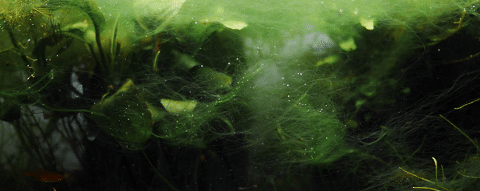
1. Improve Your Source Water
Your water makes your aquarium. It is the foundation of the entire system, so it’s usually the first place to look when problems start up.
Sometimes your local tap water is unusually high in silicates, nitrates, and phosphates. Nitrate levels of over 20 ppm are often acceptable in freshwater tanks, but you’ll need to have 5 ppm or lower to keep a healthy reef tank. Have your water tested or put together your own comprehensive water test kit to make sure everything checks out.
If you find any red flags, the best solution will be to start using reverse osmosis (RO) water for your freshwater aquarium or reverse osmosis deionized (RODI) water for your reef aquarium. This allows you to lay a solid and safe foundation.
If you do choose to use RO water or distilled water, you’ll want to remineralize your water using products like Seachem Equilibrium. Alternatively, you can mix some tap water with your RO water to restore some of the beneficial minerals and elements that plants and animals need.
A great remineralizer for freshwater tanks. Best used with RO, RODI, and distilled water. Completely aquarium safe
2. Improve Your Water Parameters
Using RO or RODI water isn’t always necessary. You can often solve aquarium water quality problems through better maintenance alone. Regular testing and partial water changes are very important for maintaining high water quality.
High levels of certain nutrients like nitrates and phosphates in a poorly maintained aquarium can cause hair algae growth. These nutrients are vital for the survival of plants and even corals, however, so maintaining the concentrations at a safe level with regular maintenance is the best way to go.
Nitrates and phosphates can come in directly from tap water, but they also build up in aquariums because they are the products of uneaten fish food, fish waste, and decaying plant material. Let’s take a look at two simple strategies to reduce the nutrients in our aquariums.
Limit your nutrient input
The first way to manage the nutrients in your aquarium is to reduce the number of nutrients you add to the system. Here’s how:
- Avoid overfeeding your fish
- Avoid overstocking your aquarium with too many fish
- Avoid overfertilizing your plants
Manage nutrient levels with regular maintenance
It’s impossible to keep all nutrients out of your aquarium, or even to keep them completely stable. Your fish and livestock need to be fed regularly and your live plants need to be fed too. So how do you remove the excess nutrients that cause hair algae growth?
Let’s take a look at the most important maintenance steps.
- Test your water parameters regularly
- Perform regular partial water changes
- Remove decaying plant and animal material as soon as possible
- Rinse out your filter media when necessary
3. Manual Removal
If you have a hair algae problem in your tank, you’re going to want to get it out of there in one way or another. Algae removal without addressing the root cause is only a temporary solution, of course, but it’s a good start!
Fortunately, green hair algae are pretty easy to remove because it is soft and does not attach very firmly. Use a toothbrush or a small bottle brush/pipe cleaner and twirl the strands on the brush before pulling them up and out of your tank.
If the algae are growing on a loose piece of hardscape like a rock, you can remove the object and clean it in a separate container of water. Scrubbing the algae in your main tank will only result in the algae drifting around and establishing somewhere else.
Hair algae sometimes grow in clumps on the sand or substrate in your tank. You can sift it out with a fine net in this case. Dead and dying hair algae can often be removed by siphoning it out with your gravel vacuum, especially if you brush it loose as you go.
4. Grow More Plants
Green hair algae need all the same things as aquarium plants to live and grow. In fact, all the plants and algae growing in a planted aquarium are in competition with each other for the same resources. Once you understand this simple fact, it’s easy to see how healthy plants can be such a great weapon for fighting algae!
Adding more aquatic plants, especially fast-growing stem plants can starve the algae and wipe it out naturally. If you already have loads of plants, focusing on their health by using good quality lighting, injecting CO2, and providing fertilizers can solve your algae problems.
What about reef tanks?
Regular plants aren’t going to work if you have a reef tank, but you still have options. attractive macro algae like Chaetomorpha can also be used to outcompete pesky hair algae. Before you go dropping macro algae into your aquarium, it’s important to note that these larger algae can also become a nuisance and grow out of control.
Chaeto is ideal to place inside sumps for additional nutrient filtration. Easy to go and maintain.
The solution is to grow them in your sump (if you provide them with lighting) or set up a refugium where they can grow without cluttering your display tank. Installing an algae scrubber is another great way to help outcompete algae in your tank.
5. Improve And Stabilize Your CO2 Levels
Low or unstable carbon dioxide levels are a major cause of hair algae in planted freshwater tanks. Investing in a quality CO2 injection system isn’t cheap, but the control and results you will see quickly justify the cost!
Just providing carbon dioxide is not the whole story, however. It’s important to have your levels stable and evenly spread out through the water column of your tank. A timing system, that works with your lighting, a diffuser to dissolve the gas into your water, and a bubble counter and drop checker system to measure and maintain stable levels are all very important. Bundles are available to purchase like the set below from our partners CO2Art.
Use Offer Code ASD10%Off
The highest end offering by CO2Art. This package includes everything you need to perform consistent and the highest quality CO2 injection in the industry!
6. Chemical Treatments
Chemical treatments for green hair algae can be highly effective, but this should always be used as a last resort. Algae control products will only treat the problem temporarily, and some chemicals can be harmful to your livestock.
Algaecides like API Algaefix have been used successfully, but these are often not safe to use with shrimp and other crustaceans. For a safer option, non-toxic alternatives like Green Water Labs Algae Control are now available.
Get Against All Algae!
Using an all-natural treatment, this product inhibits various forms of algae. Safe to use in planted aquariums
Another option is to use a carefully measured dose of hydrogen peroxide as a spot treatment or as a dip for rocks and ornaments. These objects must be rinsed in freshwater before being returned to the tank, however.
7. Use Fish And Inverts To Remove It
Algae eaters are a great way to manage stubborn hair algae problems in both fresh and saltwater aquariums. We aquarists are very lucky that there are so many great species available that feed on algae.
Unfortunately, your cleanup crew will not be able to solve the problem if it is caused by a serious imbalance, but they will keep algae under control in most circumstances.
Let’s meet some of the best hair algae eaters that get rid of aquarium algae!
Freshwater hair algae eaters
- Nerite Snails– Neritina/ Vittina/ Clithon spp.Nerite snails are true superheroes in planted tanks. These inverts add interest to any display tank with their beautiful patterns and shells, but they have much more to offer. Nerites love hair algae. These little snails will work tirelessly to rid your tank of hair algae, and the best part is that they never breed, so they won’t take over. There are other algae-eating snails, but the Nerite tops them all.
- Molly Fish – Poecilia sphenops/ P. latipinnaMolly fish deserve a lot of love. These lively livebearers are great fun to breed, and they love to eat soft algae. Molly fish are usually sold as freshwater fish, but they can be kept in saltwater too if you acclimate them!
- Amano shrimp – Caridina multidentataAmano shrimp are named after one of the most influential planted tank masters, Takashi Amano. These awesome shrimp could be called the aquascape r’s best friend because they will jump right in and tackle any hair algae problem.
Saltwater eaters
- Rabbitfish- Siganus spp.Rabbitfish are great algae-eating fish for reef aquariums. There are many awesome species to choose from, and they can be housed in tanks from about 70 gallons and up. Rabbitfish even eat the similar-looking Bryopsis algae, but beware, they have been known to take a bite out of some corals and inverts from time to time.
- Tangs – Zebrasoma spp., Ctenochaetus spp. etcTangs are one of the most popular fish choices for reef aquarium keepers all over the world. As an added benefit, many of the tangs make awesome hair algae eaters. Kole, yellow, and even powder blue tangs are all great examples.
- Turbo snails – Astraea tectaTurbo snails are excellent algae grazers for reef tank cleanup crews. These small snails grow to about 2 inches, but they have a big appetite and will keep the glass and rocks of your tank clean.
- Trochus snails – Tectus sp.Trochus snails are another excellent green hair algae eater for reef aquariums. These long-lived tropical snails make an excellent investment when putting together a clean-up crew for your reef tank.
- Molly Fish – That’s right, Molly fish can be converted over to saltwater. They are argulyable the best algae eater in saltwater tanks. While they aren’t compatible with many other saltwater fish, they are excellent in frag tanks as they keep most algae at bay with their appetite. They require super clean tanks as they have no disease resistance to saltwater pathogens.
How To Prevent
Whether you’re in the process of getting rid of hair algae in your aquarium, or setting up a new tank, knowing how to keep algae from developing can save you the frustration of trying to get rid of it.
Let’s take a look at some of the ways to set yourself up for success.
When to add your clean-up crew
Putting together a small team of algae-eating animals to keep your tank clean is a highly effective way to manage algae in the long run. It’s important to keep the welfare of your pets in mind of course, and many aquarists don’t realize that these animals can starve if you add them to a new tank without any algae.
Consider adding your first algae eaters after a few weeks once your tank is fully cycled and the first algae begin to grow. If your algae eaters manage to clean up all the algae in your tank, you’ll need to feed them a prepared algae food source like gel food, blanched vegetables, or dried seaweed.
Stay on top of maintenance
The aquarium hobby can seem a little demanding sometimes, but if you stay on top of your regular maintenance, you can stop a lot of problems before they even start. You will need a test kit to manage your water quality because you just can’t see the water parameters that cause algae growth.
Monitor your nitrates and phosphates with your test kit regularly to get an idea of how fast they build up in the water. This will help you design a maintenance schedule that is perfect for your tank. Be aware, however, that nutrient levels can build up faster or slower as you make changes to your aquarium like adding new fish or trimming your plants.
Remove excess nutrients in your aquarium water with a weekly or twice monthly water change, and take care to remove as much physical waste from the bottom of your tank as possible too.
Filtration
Inadequate filtration is a common cause of algae problems in both fresh and saltwater aquariums. Your fish tank should have high-quality filtration installed and running before you add all your livestock to get the aquarium cycle up and running. The process can take several weeks, depending on the cycling method you use.
Your filtration system should hold as much filter media as possible to provide plenty of surface area for the beneficial bacteria colonies to develop. Filters need little maintenance in well-run aquariums, but you will need to rinse out the media from time to time as it collects waste. Only rinse your media in tank water and avoid using any harsh chemicals for this job. For freshwater tanks, the canister filter is good too if you are planning a planted tank.
If you have a small reef tank, a protein skimmer could be useful for improving water quality even further.
Lighting
Poor lighting is another leading cause of algae growth in aquariums. This often stems from having too much light, but the type of light you use is also very important. Firstly, your aquarium should never be exposed to natural sunlight. Using artificial light allows you to have much better control and prevent algae growth.
It is best to match the strength of your lighting system to the types of plants you grow. You’ll also want to set your lights on a timer to provide a natural rhythm in the tank and keep your photoperiod to about 6-8 hours per day.
The spectrum of the lights you run is also very important for limiting algae growth. Make sure you’re using lights designed specifically for growing aquarium plants since regular household lamps don’t have the correct light frequency.
Plant Care For Freshwater Aquariums
Aquatic plants can be your best friend when it comes to controlling green algae. Keeping your plants healthy and growing is the key to success for outcompeting string algae, however.
A heavily planted tank with good lighting and stable CO2 injection requires regular fertilizing, trimming, and removal of dying leaves and unhealthy growth. Different plants require different types of fertilizers because some species feed primarily from their roots, while others take up most of their nutrients from the water column.
Grow root-feeding plants in a complete aquarium soil for the best results, or provide root tabs to the root zone if you are growing your plants in an inert substrate. Epiphytes like Anubias and floating plants like Java moss will benefit from a regular dose of a high-quality water column plant food.
FAQs
What causes this type of green algae?
Hair algae growth in aquariums is usually triggered by an imbalance of nutrients, light intensity, and carbon dioxide. Providing excess food to your livestock, especially when coupled with a lack of aquarium maintenance, is another common cause.
How do I get rid of it in my aquarium plants?
You can remove hair algae manually from aquarium plants, but adding a few algae-eating fish can provide a more thorough solution. Trimming plants that are covered in dense clumps of hair algae is also a good option.
How do you get rid of it if it’s stringy?
Stringy green algae can be removed by hand and by scrubbing the objects that it grows on. Chemical treatments with liquid carbon or hydrogen peroxide can also be very effective. Tackling the imbalances that cause the problem is the best way to prevent it from coming back in the future, however.
Is It good for a fish tank?
Small amounts of hair algae are not necessarily bad for your fish tank. These algae help to reduce nutrient levels and provide a food source to many types of animals. Hair algae can be unsightly though, and if you leave it to grow out of control, it can become dangerous to your fish and plants.
Final Thoughts
Hair algae growth in aquariums is a very common issue that affects just about everyone in the aquarium community. Use the 7 tips in this article to get rid of hair algae and get your fish tank looking beautiful again!
Have you managed to get hair algae growth under control in your aquarium? Tell us about your experiences with hair algae in the comments below!
- About the Author
- Latest Posts
I’m thrilled that you found Aquarium Store Depot! Here you’ll find information on fish, aquariums, and all things aquatics related. I’m a hobbyist (being doing this since I was 11) and here to help other hobbyists thrive with their aquariums! I adhere to a high quality Editorial Process and Review products with real life field usage and practical analysis.

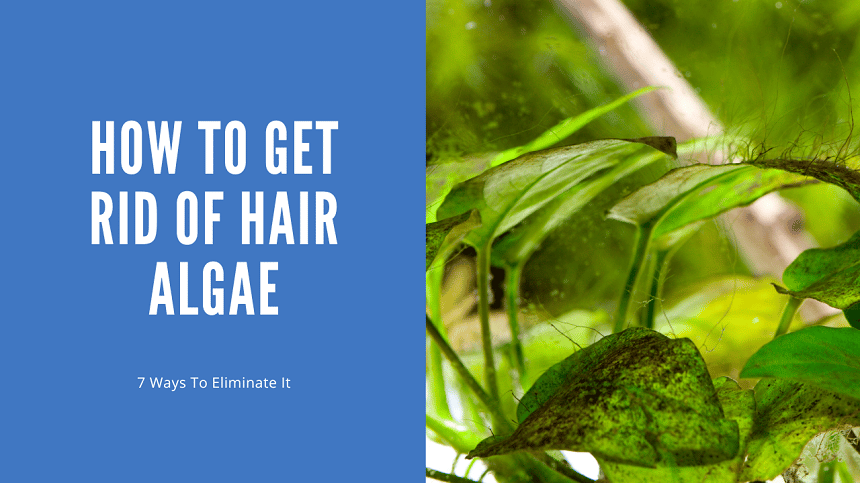
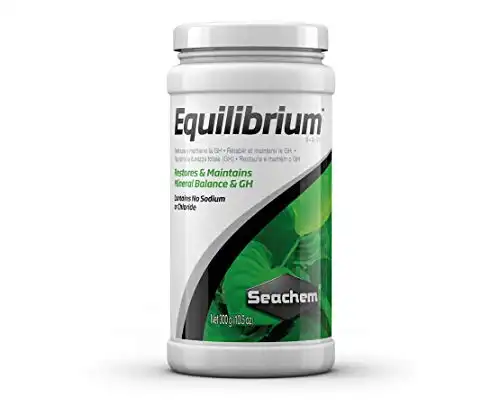
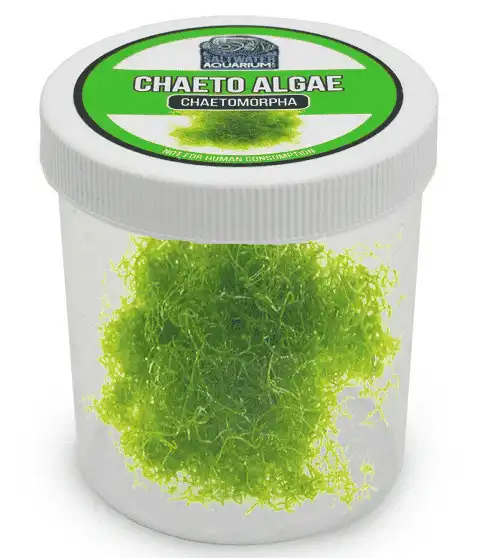
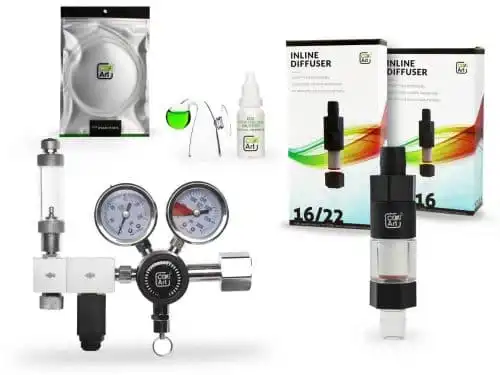
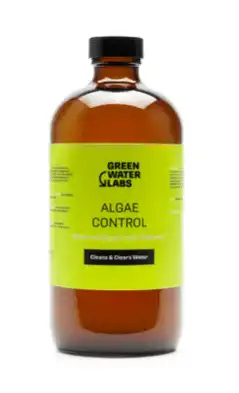




hair algae on certain plants like that of the Amazon Sword is very difficult to say remove from this particular plant for the Simple reason being that the leaf of this plant – although it may present itself as being a rather broad, robust plant is anything but!
I’ve quickly learnt that the A.S. is a very fragile leaf’d plant and is extremely sensitive to ones fingers trying to remove algae from it regardless of how careful a person is.
the (somewhat) good thing about the sword is that the sword can be cut down almost to the base of the stem and usually grows back.
This however, does not eliminate the cause.